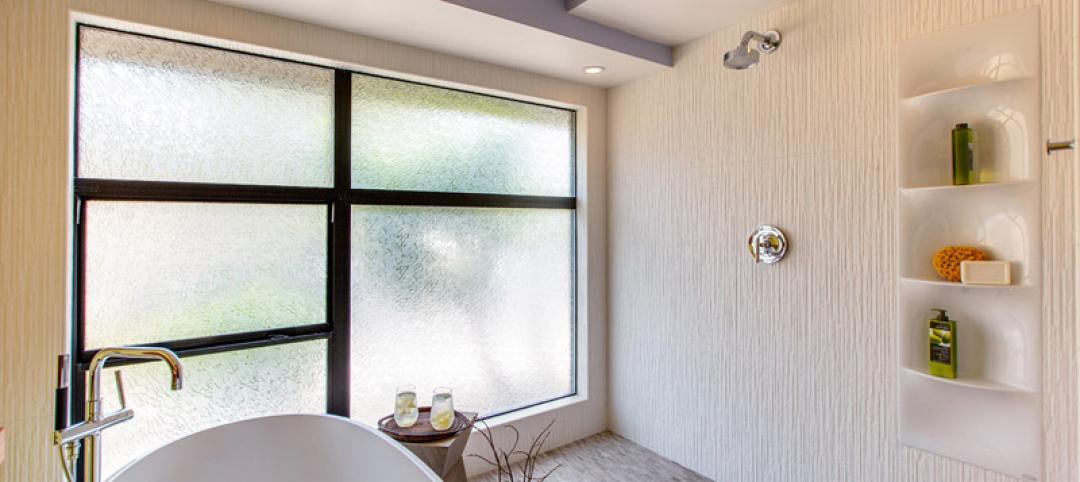Designed by Pietro Belluschi, the Juilliard School in New York’s Lincoln Center for the Performing Arts had remained relatively untouched since its completion in 1969. In the early 2000s, a plan was conceived to make Lincoln Center—and Juilliard—more architecturally engaged with the general public and its Upper West Side neighbors.
In an effort to offer additional educational opportunities to the growing number of students, officials at the school sought to add 39,000 sf of classrooms, practice rooms, and rehearsal spaces, as well as two new performance venues. The design also called for more informal social spaces for students and greater access to daylight, as well as an upgrade of the public entrance to integrate the building—a classic example of the Brutalist movement—more fully into the landscape of the Lincoln Center campus.
Renovating on the Upper West Side
Working with a Building Team that included a design collaboration between New York-based firms FXFOWLE Architects and Diller Scofidio + Renfro, engineering firms Arup and Langan Engineering & Environment Services, and Turner Construction Co., the administration sought to preserve the iconic elements of Belluschi’s design while meeting the needs of students and creating a more public identity for the building.
Numerous stakeholders had to be consulted—this is, after all, New York—from academic department heads to Lincoln Center’s 14 other constituent organizations, as well as the New York City Department of Planning, neighborhood and community boards, and the New York State Historic Preservation Office.
Moreover, the Building Team was to undertake the project while Juilliard remained fully occupied and functional. With an institution whose very soul relied on quality acoustics for its existence, mitigating sound during construction was a primal concern for the Building Team. “The challenge in renovating the antiquated, Brutalist space was to perform surgery on part of the building while still allowing full bodily function of the other organs,” says Heidi Blau, AIA, LEED AP, a partner at FXFOWLE.
PROJECT SUMMARY
The Juilliard School Renovation and Expansion, New York City, N.Y.
Building Team
Owner/developer: The Juilliard School
Architects: FXFOWLE Architects (submitting firm) and Diller Scofidio + Renfro
Structural engineer: Arup
Civil engineer: Langan Engineering & Environment Services
GC/CM: Turner Construction Co.General Information
Size: 39,000 sf
Construction cost: Confidential at owner’s request
Construction period: 2005 to 2010
Delivery method: CM
To meet these demands, a sophisticated plan of phasing, relocation, use of temporary facilities, and incremental reoccupation was developed. Blau says she envisioned the process as one “where one facet might undergo a transformation without disrupting the integrity of the project as a whole.” The use of swing space was an important strategy. For example, an infill interior courtyard was made into a temporary classroom; later, the space was converted to a permanent orchestra rehearsal room.
Opening up to the community
For more than four decades, the Juilliard building presented a fortress-like appearance to the surrounding community, a manifestation of the Brutalist design that Blau says “reflected a cloistered approach to the arts.” The Lincoln Center campus master plan called for a more open and inviting Juilliard.
The first step was to open up Juilliard’s entryway into a three-story lobby, thereby extending a warm welcome to visitors entering from 65th Street. The glass lobby connects spaces at street level, where many public programs are offered, to the student lounge on the second level and administration offices on the third. LED information boards, computer terminals, and a coffee bar invite more opportunities for students to meet and socialize; a glass box office is easily accessible to visitors and patrons. The lobby’s new grand staircase contains specially cut sections that provide communal spaces for those in transit from one floor to another, a feature that the BD+C Reconstruction Awards jury, notably juror Martha Bell, FAIA, found “very interesting.”
The façade, with its three-story glass curtain walls along Broadway, entices neighbors and passersby to look in, while at the same time projecting the school’s energy out into the community. The glass wall brings much more natural daylight into the school’s once dark, labyrinthine interiors.
Staying true to form
All this, while still retaining Belluschi’s stone details elsewhere on the exterior elevations. “The building façade includes more than 10 different types of glass in order to meet the distinct technical requirements of strength, acoustics, and thermal performance of the exterior wall,” says Peter Pesce, AIA, a senior associate at FXFOWLE. “Matching the original stone details while employing modern construction techniques proved challenging.”
Respecting the original Brutalist design was important to the Building Team. Travertine cladding was used from the very quarry where the original was mined, providing continuity of materials. Says Blau, “The careful surgery performed on Pietro Belluschi’s building was predicated on the existence of robust bones—able to support the transformation while retaining a significant portion of the existing travertine and concrete.”
Taking on the renovation of one of New York City’s cultural treasures required not only an appreciation for the original design, but also a sensitivity to the legitimate concerns of numerous stakeholders. The renovation and expansion of the Juilliard School has transformed the revered institution into a more modern performing arts center while preserving its architectural heritage. It is for these reasons that our Reconstruction Awards jury has designated this project as a Bronze winner. +
Related Stories
Hotel Facilities | Mar 4, 2015
Hotel construction pipeline reaches six-year high
After a three-year bottoming formation, the pipeline for hotel construction has posted five consecutive quarters of double-digit year-over-year growth.
BIM and Information Technology | Mar 4, 2015
Why China's CCTV building needed a WiFi retrofit
It took a year-long retrofit to get WiFi transmission issues solved at China's iconic skyscraper.
High-rise Construction | Mar 4, 2015
Must see: Egypt planning 656-foot pyramid skyscraper in Cairo
Zayed Crystal Spark Tower will stand 200 meters tall and will be just a short distance from the pyramids of Giza.
Transit Facilities | Mar 4, 2015
5+design looks to mountains for Chinese transport hub design
The complex, Diamond Hill, will feature sloping rooflines and a mountain-like silhouette inspired by traditional Chinese landscape paintings.
Energy Efficiency | Mar 4, 2015
DOE launches crowdsourcing website for technology innovators
The Oak Ridge National Laboratory launched a new crowdsourcing website called the Buildings Crowdsoucing Community to collect and share ideas by innovators for energy-efficient technologies to use in homes and buildings.
Multifamily Housing | Mar 3, 2015
10 kitchen and bath design trends for 2015
From kitchens made for pet lovers to floating vanities, the nation's top kitchen and bath designers identify what's hot for 2015.
Office Buildings | Mar 3, 2015
Former DuPont lab to be converted into business incubator near UPenn campus
The new Pennovation Center will provide collaborative and research spaces for educators, scientists, students, and the private sector.
Sponsored | BIM and Information Technology | Mar 3, 2015
The great debate: Is 3D PDF really BIM?
You can pull apart buildings, cut through floors, and view simulated animation for assembly instructions all within a PDF.
K-12 Schools | Mar 2, 2015
BD+C special report: What it takes to build 21st-century schools
How the latest design, construction, and teaching concepts are being implemented in the next generation of America’s schools.
Codes and Standards | Mar 2, 2015
Proposed energy standard for data centers, telecom buildings open for public comment
The intent of ASHRAE Standard 90.4P is to create a performance-based approach that would be more flexible and accommodating of innovative change.















